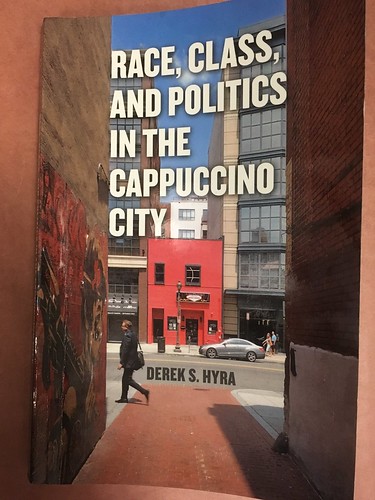 So it has been well over a month or two since I sent questions to Dr. Derek S. Hyra’s publicist and no one has gotten back to me. Fine. I’m not sure who is reading this blog anymore anyway. And since I’m guessing hardly anyone is reading this, I’m just going to say it, Race, Class and Politics in the Cappuccino City wasn’t a great book.
So it has been well over a month or two since I sent questions to Dr. Derek S. Hyra’s publicist and no one has gotten back to me. Fine. I’m not sure who is reading this blog anymore anyway. And since I’m guessing hardly anyone is reading this, I’m just going to say it, Race, Class and Politics in the Cappuccino City wasn’t a great book.
It has some things going for it. For one, it is about Shaw (more the U Street area) that’s a reason to check it out of the library. Secondly, it is an easy read. I was able to finish it in two work days, so the writing style is very approachable. And if you ignore the notes, references, and index, it is less than 200 pages. That’s the good.
The not good comes from inaccuracies, undefined/poorly defined/ vague terms, and cherry picking. I came to the book with an open mind. I was aware that Hyra sympathized with OneDC, an organization that protests and complains about gentrification. I can enjoy an anti-gentrification book, unfortunately, a glaring factual error in Part II made it difficult for me to trust the author. Talking with other people there are other minor factual errors in the book, that doesn’t help.
In the first part of the book, Hyra describes how he did his research, where the neighborhood is, and his theories. The first two chapters are okay, the third sent me on a margin writing fit. Chapter 3 “From Company Town to Postindustrial Powerhouse” contained a poor definition of Washington, DC. or DC. Hyra frequently uses “DC” when it appears that he means “DC Area”. Here’s the difference, one of these things has representation in Congress, one does not. It is a common sin of suburbanites and people who live outside of the District of Columbia, and yes, this got under my skin like a mite. He described the defense industry as having “a major DC presence.” The word “area” after “DC” would have been more accurate. On page 51, Table 1, he lists the top 5 defense contract firms, none in the District of Columbia. I understand the need to talk about the area economy but it confuses matters the way it is written.
Next I’ll write about Part II: WTF is Going On?
